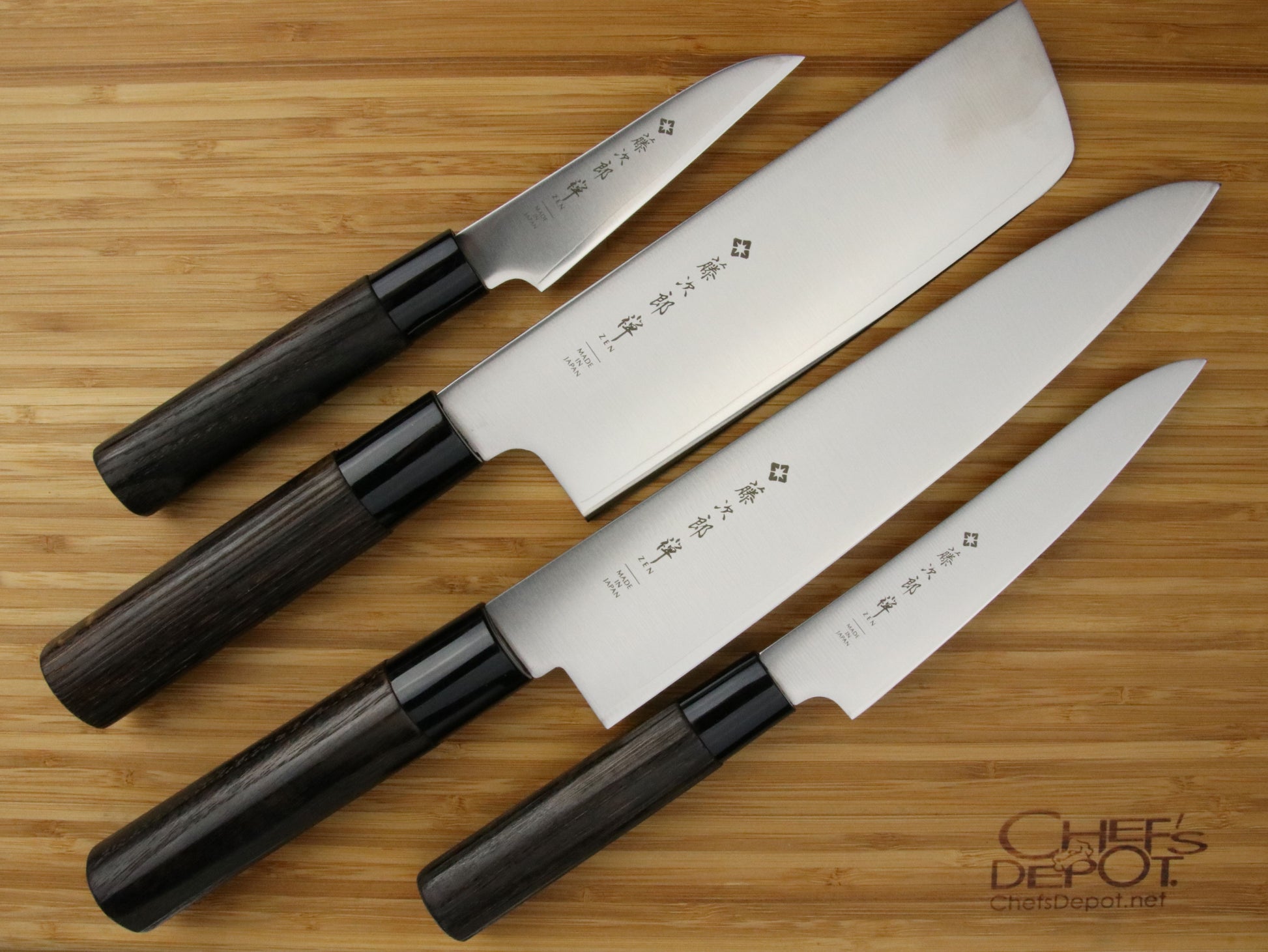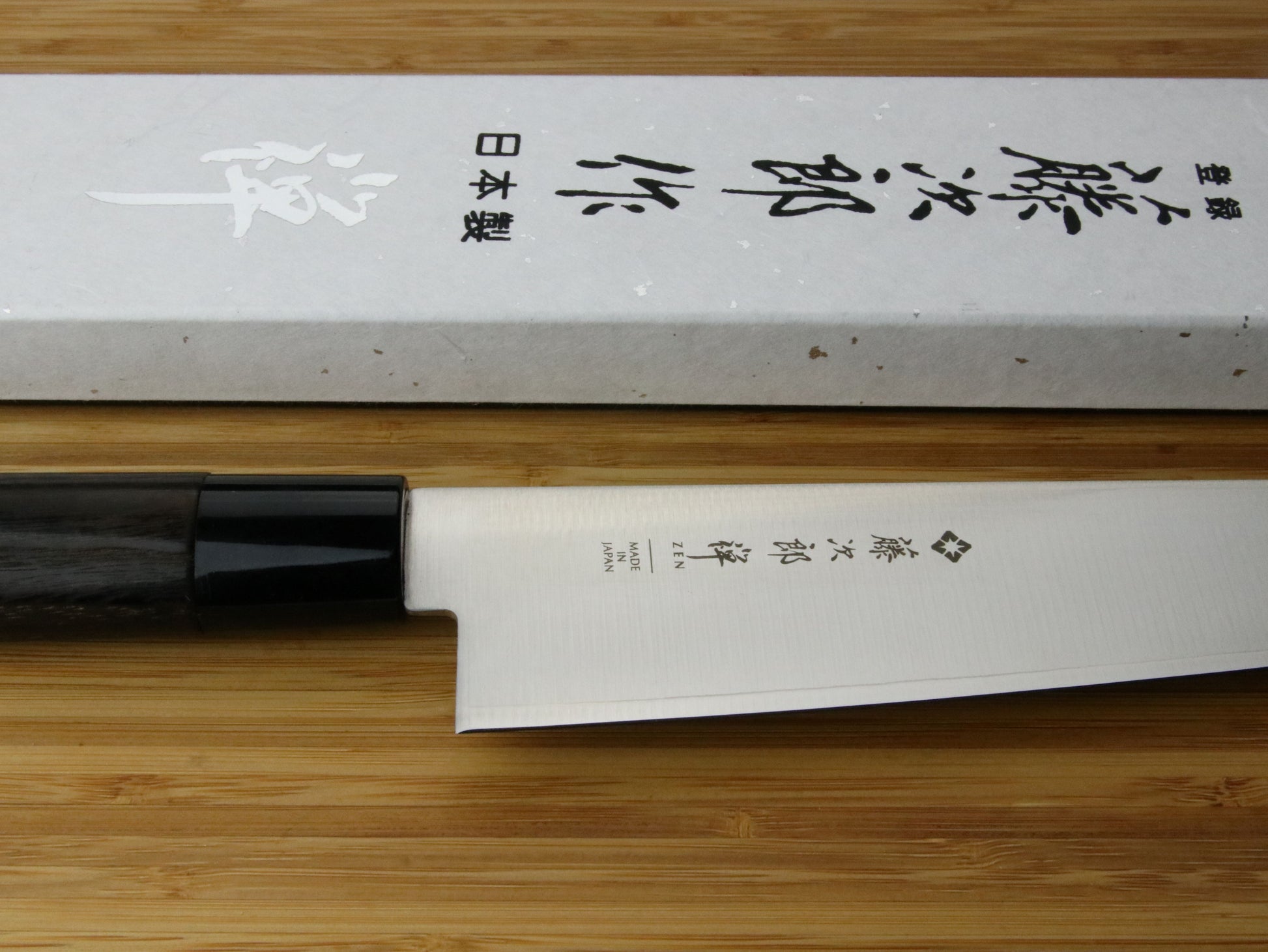Tojiro Zen 4-Piece Set with Magnetic Stand
Tojiro Zen 4-Piece Set with Magnetic Stand
In stock
Couldn't load pickup availability
Tojiro’s Zen series is forged in Tsubame, Japan, and features the same design, chestnut handle, and fine craftsmanship as the premium Shippu series, but utilizes three-layer san mai construction for strength instead of Damascus steel. Like the rest of Tojiro’s premium traditional lines, Zen is imported exclusively by Seattle Cutlery.
Our four-piece set includes a well-rounded lineup to cover the majority of kitchen tasks, plus a complimentary magnetic bamboo knife stand our very own design, normally $39.90, as our gift to you. It stands freely on your counter and securely holds up to five knives with blades of up to 9.5". We offer it in two shades—pick your favorite!
Function
Function
90 mm (3.5") Paring Knife
The paring knife is best suited for paring fruits and produce due to its short, agile blade. The knife’s narrow point also makes it useful for tasks such as deveining shrimp, coring fruits, and precisely removing spots. The Japanese paring knife is set apart from Western counterparts by the straight, angled blade, which allows the knife to be used on a cutting board while maintaining clearance between the handle and cutting surface.
130 mm (5.1") Petty Knife
The petty or utility knife is a small, multipurpose blade that offers the versatility of a chef’s knife in a smaller package. Developed in Japan in the late 19th century with influence from European patterns, the petty knife's gently curved blade is useful for paring fruits and vegetables, slicing meat, chopping small produce, carving, and other tasks.
165 mm (6.5") Nakiri
The nakiri bōchō (菜切り包丁), “knife for cutting greens,” is a traditional Japanese vegetable knife best used for up-and-down chopping. Unlike the santoku and gyuto (chef’s knife), which have narrow tips intended for cutting meat, the nakiri has a square tip and broad blade that maximize chopping power along the full length of the knife. The straighter edge ensures full contact with the cutting board, helping to cut through tough vegetable skins that a rounded edge can miss, while the rounded corner facilitates rock-chopping. Like other Japanese knives, the nakiri has a thinner blade and more acute edge than European knives, so it can effortlessly make straight cuts and doesn’t break stiff vegetable slices.
210 mm (8.3") Chef's Knife
Gyūtō (牛刀), meaning "beef knife," is the Japanese term for a French-pattern chef’s knife. Also known as the yo-boucho (洋包丁), “Western chef’s knife,” the gyuto was developed in Japan after the Meiji Restoration of 1868. This blade shape was originally designed to process large cuts of beef but is now the most popular general-purpose knife in the Western kitchen. In addition to slicing meat, the gyuto is also particularly suited for chopping produce near the heel and for making finer cuts with the narrow tip.
Blade
Blade
The blade is made using the centuries-old san mai (“three-layer”) construction technique, in which a hardened steel core is forge welded to a jacket of softer, more flexible steel for strength. Nakiyo San Mai blades are forged with a core of VG-10 cobalt alloy steel, a high-carbon stainless steel developed in Japan. Hardened to a Rockwell hardness of 60, it accommodates a long-lasting, razor-sharp edge. The core is clad in 13 chrome stainless steel, which strengthens the blade and guards against corrosion.
Handle
Handle
The handle is crafted from lightweight chestnut wood, which provides a secure grip without upsetting the knife’s balance. The wood is fire-blackened, enhancing its durability and water resistance, and secured with a ferrule (collar) of polypropylene resin. Its D-shaped shinogi profile maximizes comfort and ease of control.
Care & Maintenance
Care & Maintenance
Wash your knife by hand with warm water, soap, and a soft sponge or dish towel. Avoid prolonged exposure to heat or moisture. Remember—there's no such thing as a dishwasher-safe knife!
To prevent edge chips, avoid impacts with hard surfaces. Don't chop bones, shells, or frozen food, and cut only on a wood or bamboo cutting board. Don't leave your knife where the edge might come in contact with something hard, such as in a sink or a drawer with other knives.
Store your knife so that the edge is protected from abrasion and impact. We recommend a magnetic stand, but you can also use a knife block with horizontal slots. If you must keep it in a drawer, use an edge protector. See our storage options here.
Sharpening
Sharpening
Sharpen on a whetstone at an angle of 15° per side and finish at a grit of at least 1000, but preferably 3000 or higher. Pull-through and electric sharpeners should be avoided for Japanese knives.
Alternatively, you can have your knives sharpened professionally. Seattle Cutlery offers a state-of-the-art, mail-in sharpening service for our own customers, but other services may be available to you locally.
Honing steels are not necessary to maintain Japanese knives. You can optionally touch up the edge with a high-grit sharpening stone or a ceramic sharpening rod.
Warranty
Warranty
All Nakiyo, Tojiro, Sabatier, and SeaCut products sold by Seattle Cutlery are covered by our lifetime warranty against defects in materials and workmanship. If you follow our care and maintenance advice and your knife ever fails during honest use, we will gladly repair or replace it. Our warranty does not cover regular wear and tear or damage due to misuse, but we may still be able to help in some cases.
Share
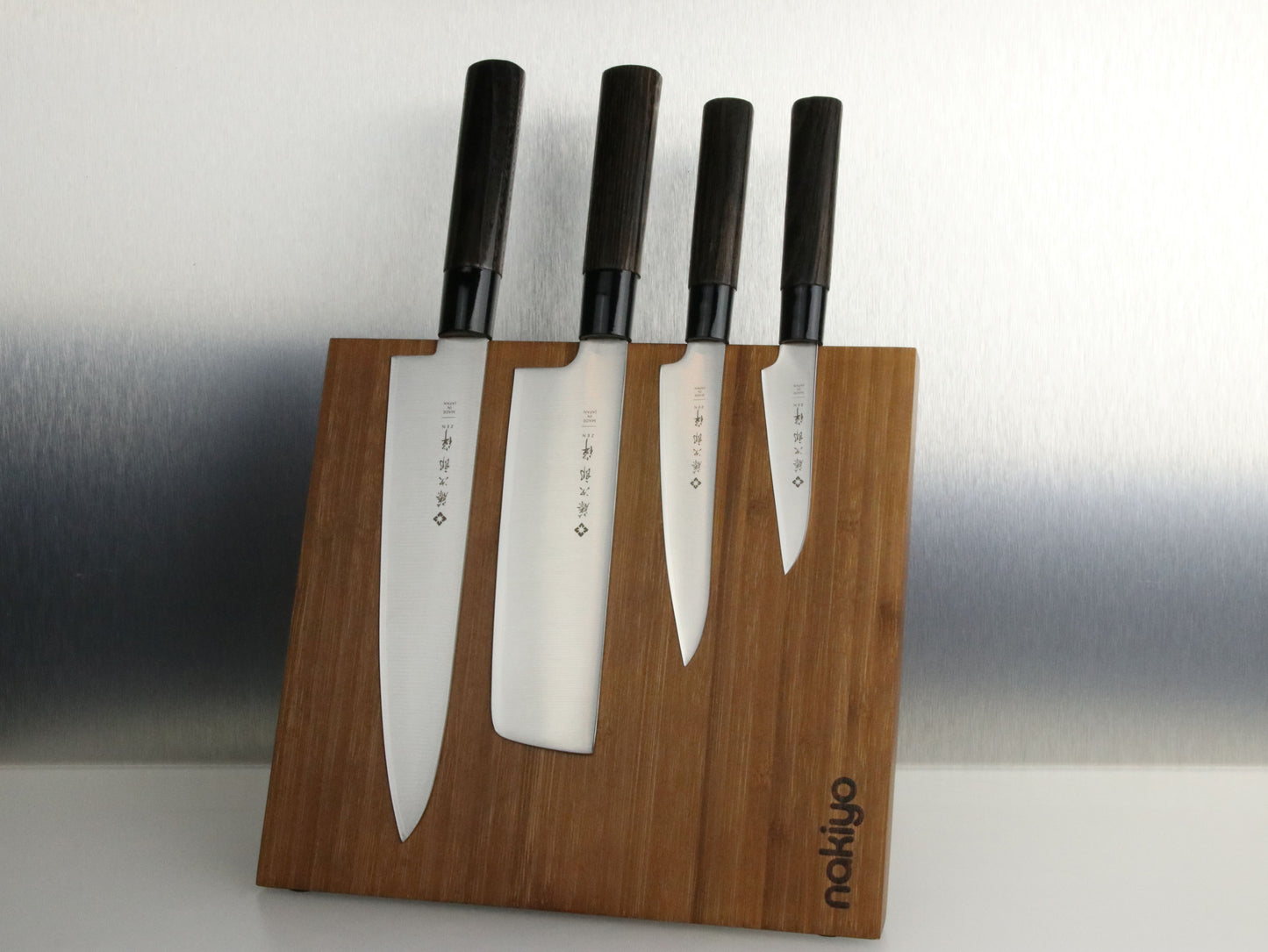
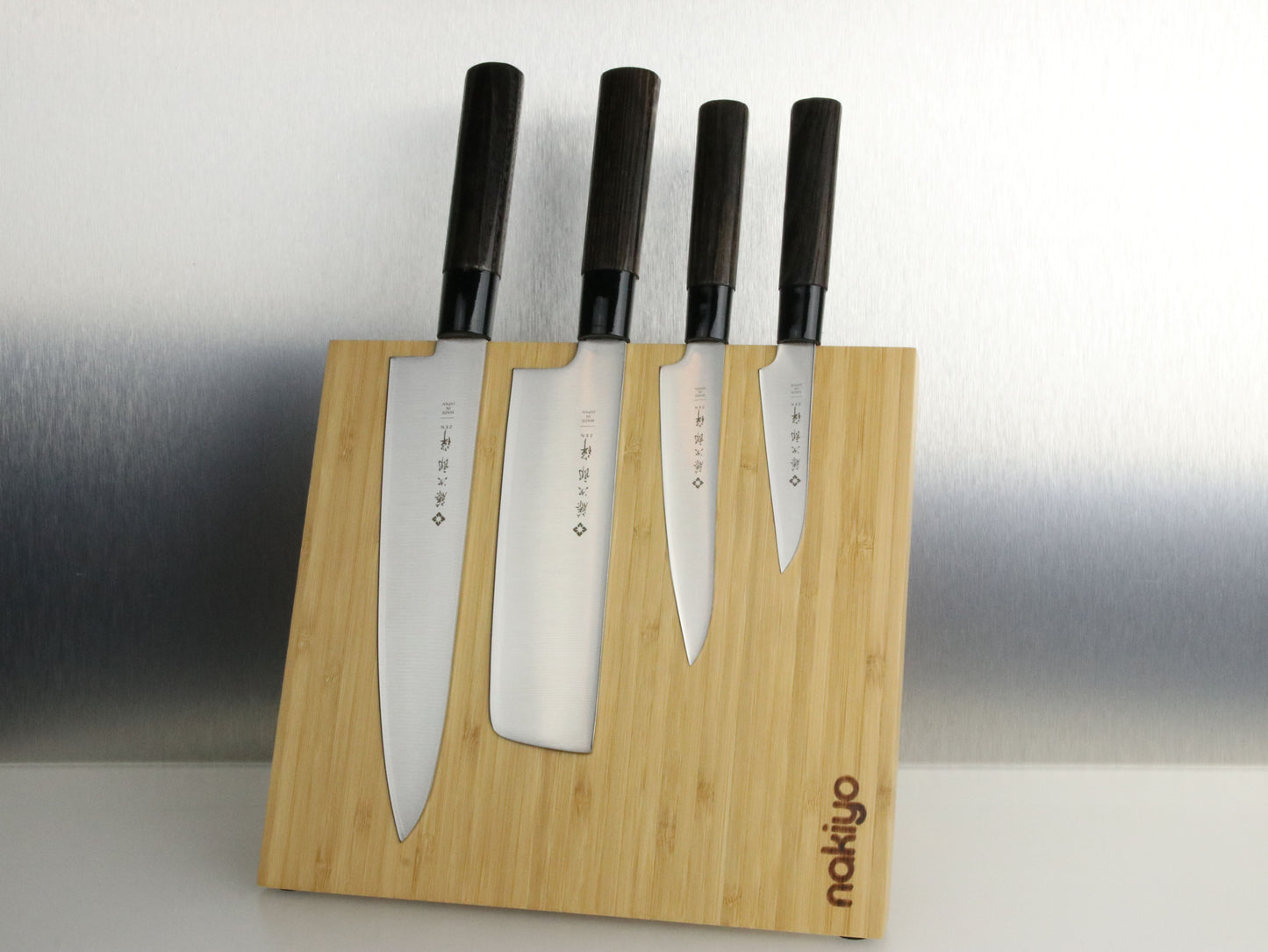
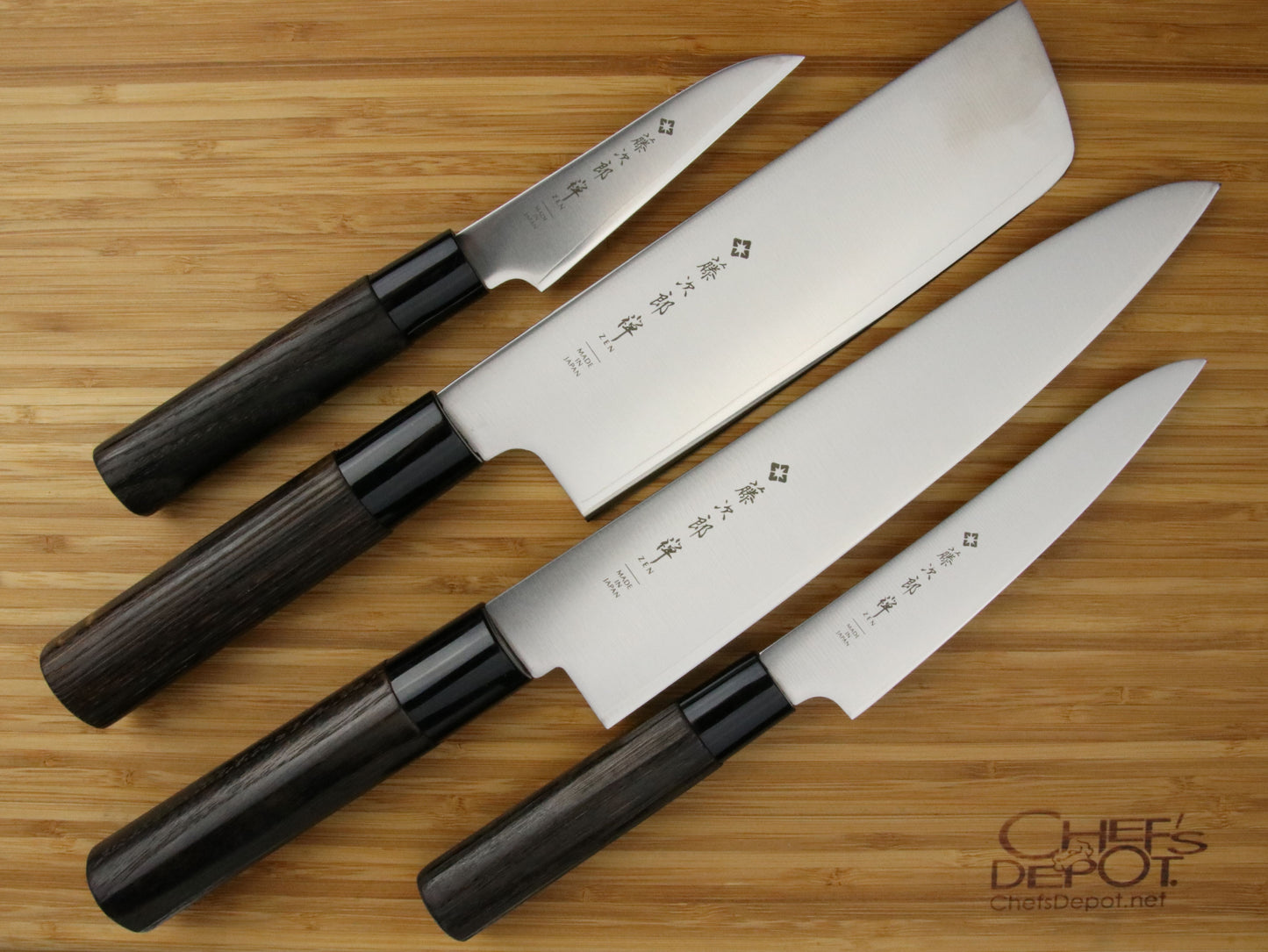
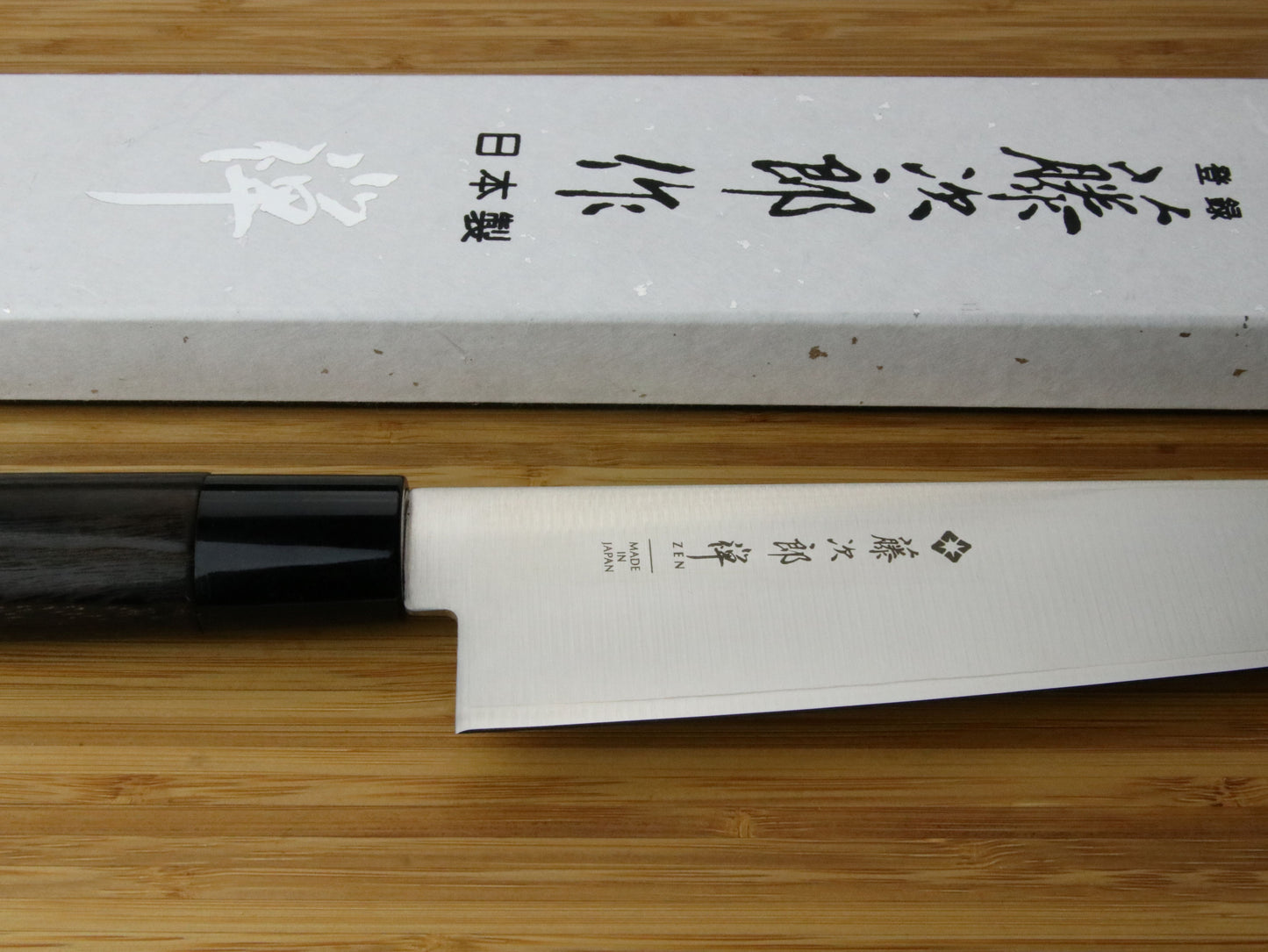
Specifications
Length: Gyuto: 210 mm (8.3") blade, 275 mm (10.8") overall
Nakiri: 165 mm (6.5") blade, 305 mm (12.0") overall
Petty: 130 mm (5.1") blade, 225 mm (8.9") overall
Paring: 90 mm (3.5") blade, 200 mm (7.9") overall
Weight: Gyuto: 135 g (4.8 oz)
Nakiri: 155 g (5.5 oz)
Petty: 40 g (1.4 oz)
Paring: 35 g (1.2 oz)
Blade: VG10 cobalt alloy steel clad in 13 chrome stainless
Edge: Double bevel
Handle Material: Fire-blackened chestnut wood with polypropylene resin ferrule
Handle Shape: D-shaped (shinogi)


